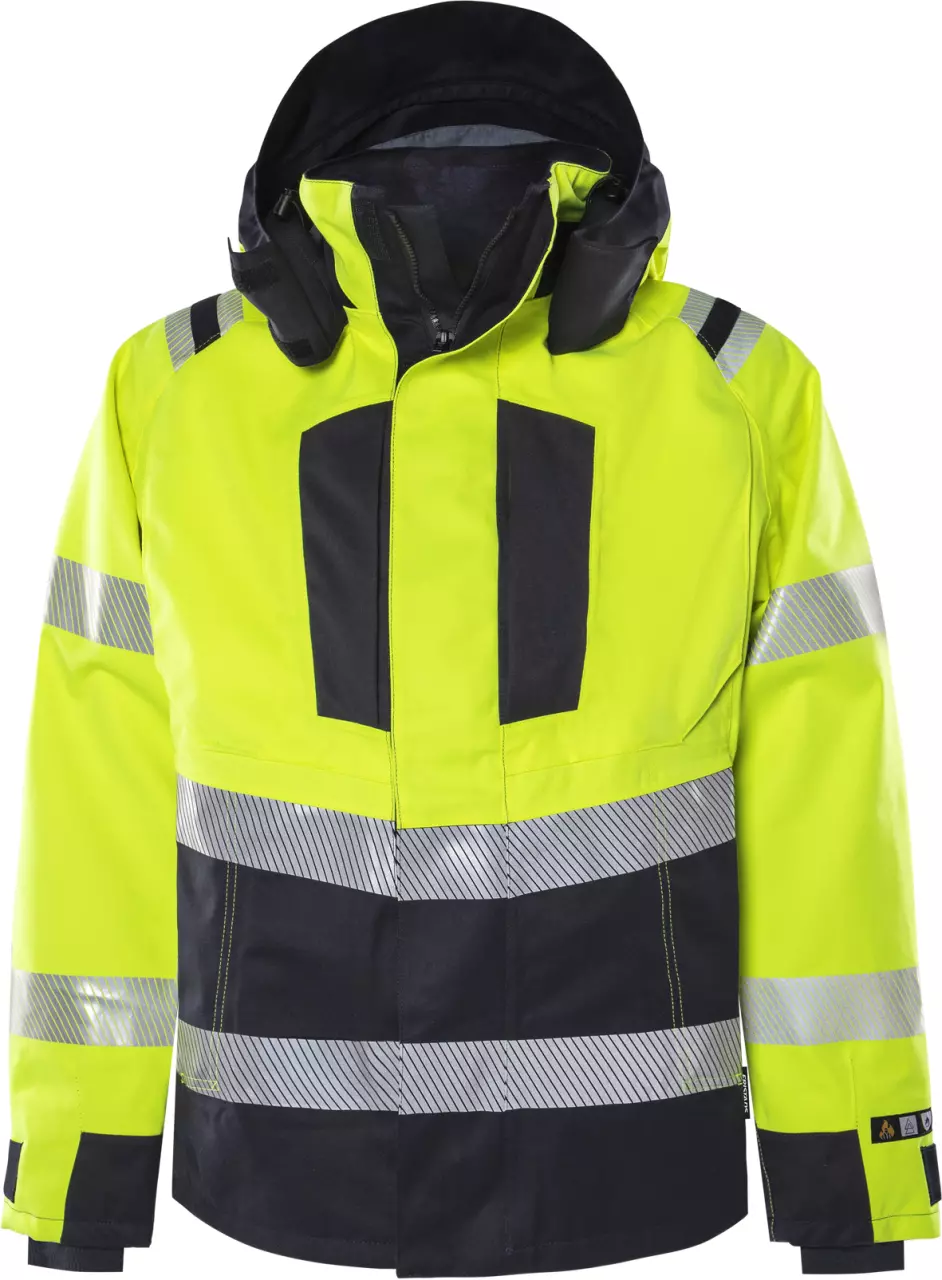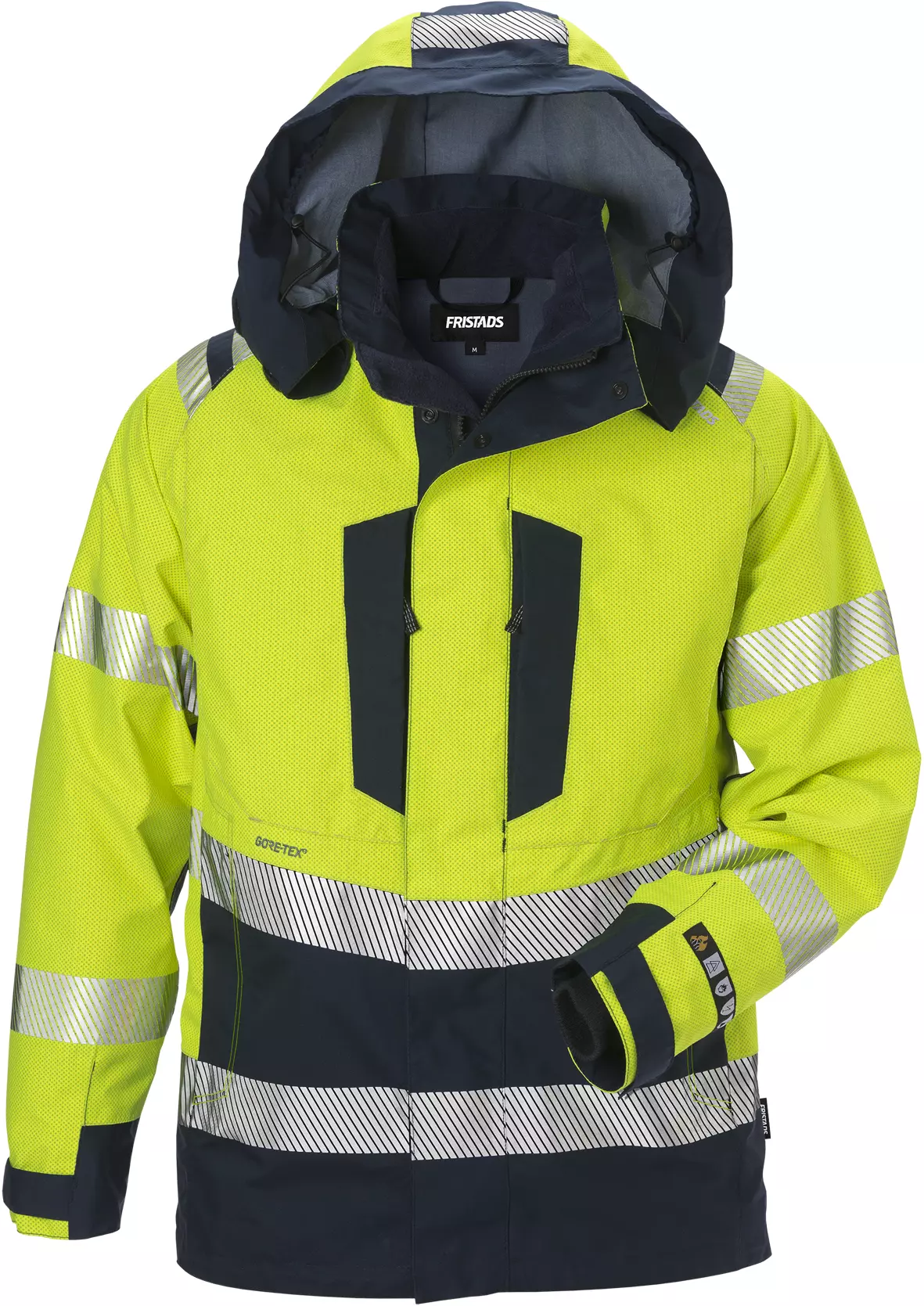
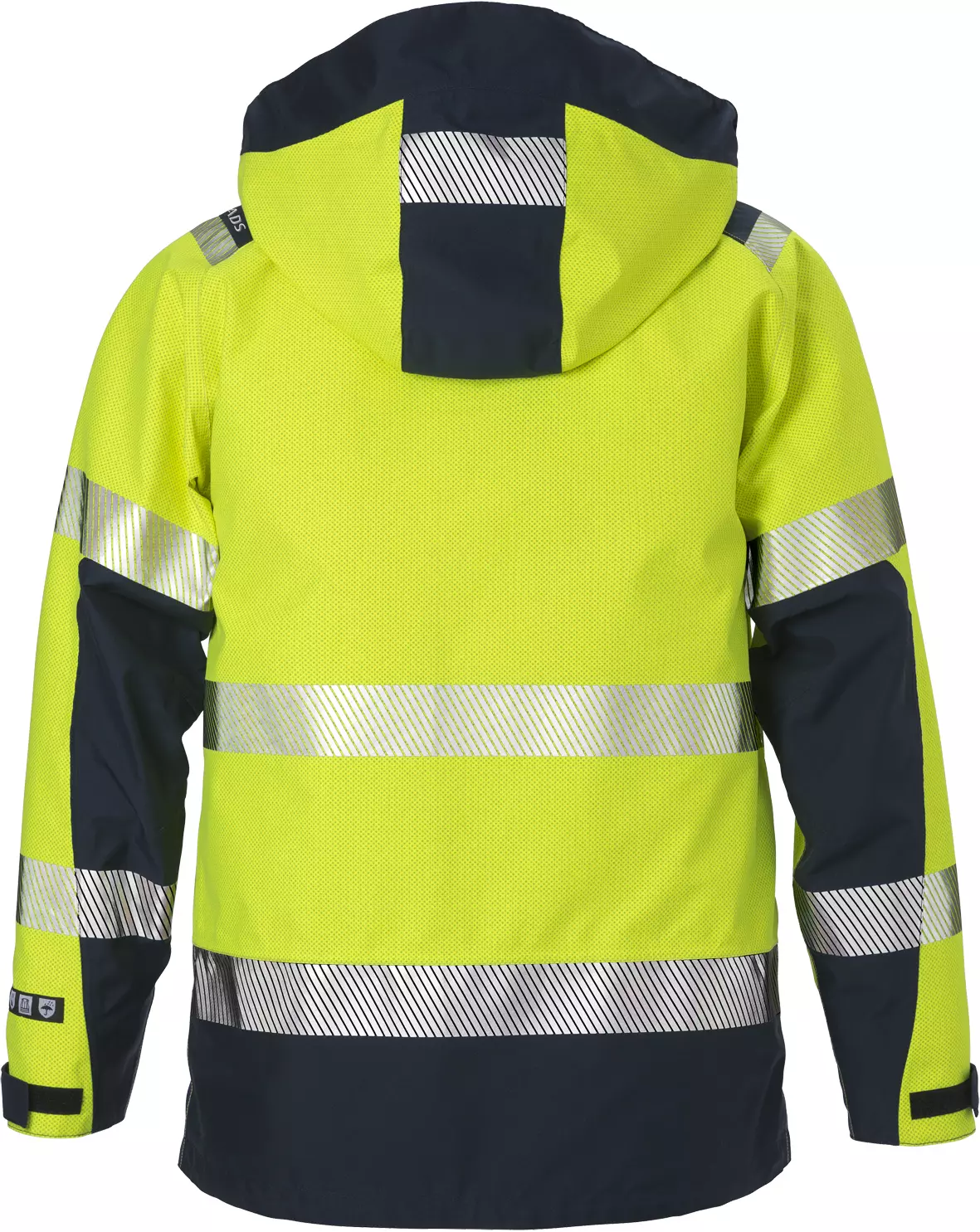
Features You'll Love
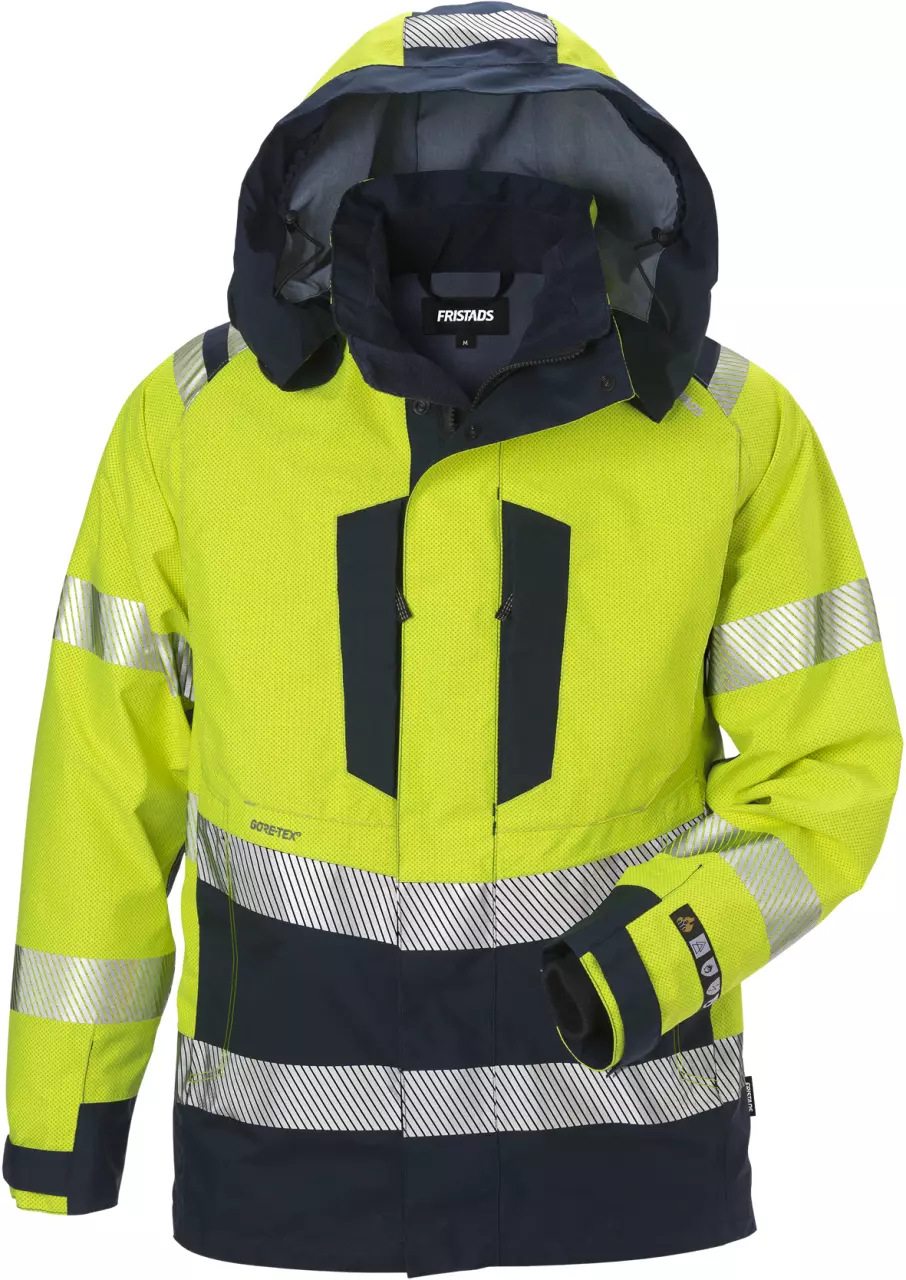
Closure Style · Zipper
Material · Polyester, Aramid, Viscose, Softshell, Carbon
The method used to fasten the jacket or vest, affecting ease of use, security, and weather protection during work activities.

Cuff Style · Elastic
EN 1149-5 · Material Performance Tested
EN 343 · Waterproofness Class 4, Breathability Class 4
How the sleeve opening closes or fits at the wrist, affecting protection from elements and comfort during movement.
This garment's material is tested to reduce static electricity buildup. It helps prevent sparks that could cause a fire or explosion in certain work environments, keeping you safer around flammable materials or sensitive electronics.
This garment offers the highest level of waterproofness available. It is designed to keep you dry and comfortable during prolonged periods of heavy rain, providing maximum protection against severe weather conditions and driving rain.
This garment offers the highest level of breathability, ensuring maximum comfort during strenuous activity. It allows sweat to escape effectively, keeping you dry from the inside while protecting you from rain, snow, and other wet weather.

Jacket Type · Hooded
An integrated hood provides essential head protection from the elements, keeping you dry and focused on the job.
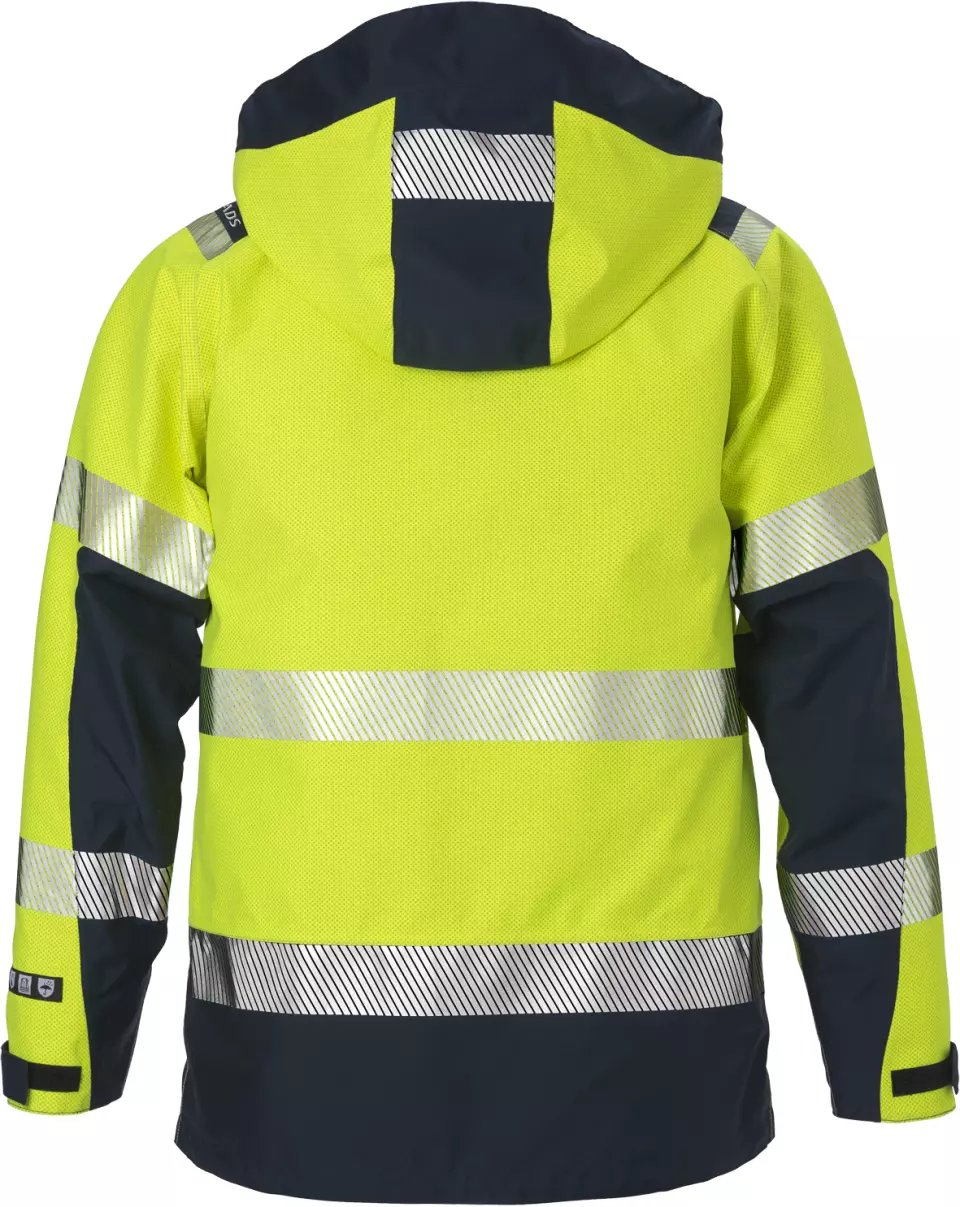
EN ISO 20471 · Reflective Strip Area Grade 2
Provides an intermediate level of visibility for use in moderate-risk environments. This makes you more visible day and night to traffic moving at speeds up to 60 km/h, ideal for road work or delivery drivers.
Fristads
Flamestat High Vis GORE-TEX PYRAD® Jacket Class 3 4095 GXE
Flamestat High Vis GORE-TEX PYRAD® Jacket Class 3 4095 GXE
(16)
638,33 €
Choose size
Free delivery
Features You'll Love

Closure Style · Zipper
Material · Polyester, Aramid, Viscose, Softshell, Carbon
The method used to fasten the jacket or vest, affecting ease of use, security, and weather protection during work activities.

Cuff Style · Elastic
EN 1149-5 · Material Performance Tested
EN 343 · Waterproofness Class 4, Breathability Class 4
How the sleeve opening closes or fits at the wrist, affecting protection from elements and comfort during movement.
This garment's material is tested to reduce static electricity buildup. It helps prevent sparks that could cause a fire or explosion in certain work environments, keeping you safer around flammable materials or sensitive electronics.
This garment offers the highest level of waterproofness available. It is designed to keep you dry and comfortable during prolonged periods of heavy rain, providing maximum protection against severe weather conditions and driving rain.
This garment offers the highest level of breathability, ensuring maximum comfort during strenuous activity. It allows sweat to escape effectively, keeping you dry from the inside while protecting you from rain, snow, and other wet weather.

Jacket Type · Hooded
An integrated hood provides essential head protection from the elements, keeping you dry and focused on the job.

EN ISO 20471 · Reflective Strip Area Grade 2
Provides an intermediate level of visibility for use in moderate-risk environments. This makes you more visible day and night to traffic moving at speeds up to 60 km/h, ideal for road work or delivery drivers.
Product description
This Flamestat High Vis Jacket combines 2-layer GORE-TEX PYRAD® material with comprehensive protection against arc flash, heat and weather influences. The fully lined jacket offers durable wind and waterproof protection while maintaining breathability and meets multiple safety standards for industrial use. With its metal-free construction and reflective strips running over the shoulders, it ensures optimal visibility and safety in demanding work environments.
Product Features:
- 2-layer GORE-TEX PYRAD® material, permanently wind and waterproof, breathable
- Dirt and oil repellent
- Fully lined
- Reflective strips running over the shoulders
- Removable, adjustable lined hood
Technical Details:
- Water column 10,000 mm
- ePTFE Membrane
- Breathability RET 8.33
- Material weight: 220 g/m², Lining: 130 g/m²
- Metal-free garment
Standards:
- EN 61482-1-2 APC 2, EN 61482-1-1 ELIM: 40 cal/cm²
- EN ISO 11612 A1 A2 B2 C1 D3 E3 F1
- EN ISO 11611 A1 A2 Class 2
- EN 1149-5
- EN 13034 Type PB [6]
- EN ISO 20471 Class 2 in sizes XS-S and Class 3 in sizes M-3XL
- EN 343 Class 4/4
- OEKO-TEX® certified
